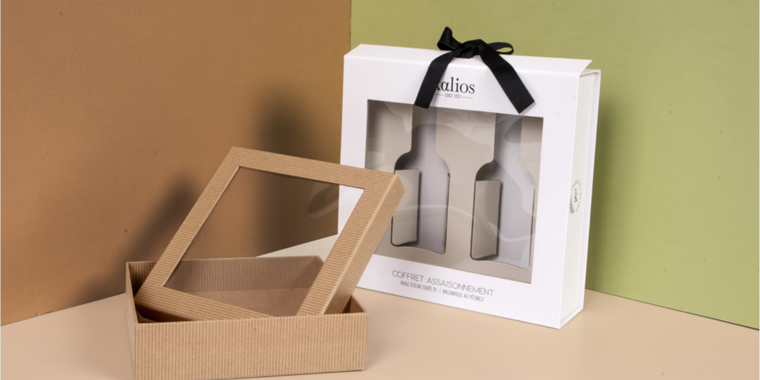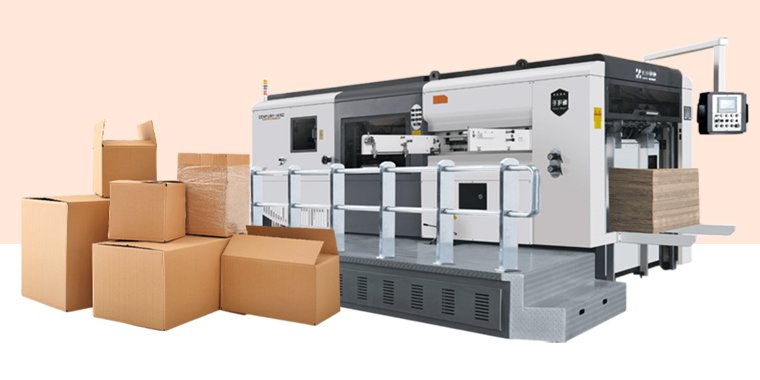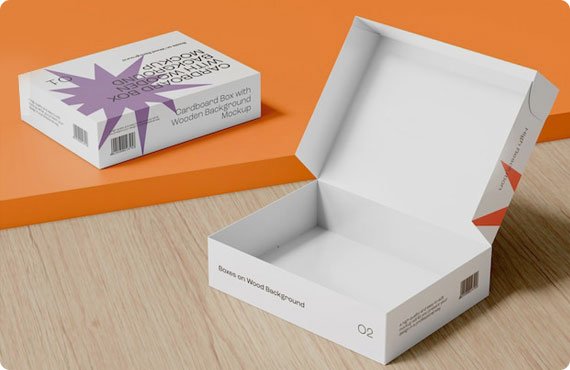March 05, 2025

Window patching is a packaging technique that adds transparent windows to boxes, envelopes, and cartons. It improves product visibility and enhances the unboxing experience.
This method is widely used in industries where showcasing the product is essential, like food, cosmetics, and retail. A clear film is applied over a die-cut window. This allows customers to see the product and keep it protected.
This process helps brands create a premium feel for their packaging while maintaining product safety and hygiene.
This blog post will discover window packaging and how it works. We’ll also review its importance in the packaging industry and compare it with other packaging techniques. So, without any further ado, let’s get started!
Window patching is the activity of attaching a transparent film to a die-cut window in the packaging. This method is used to give customers a preview of the product while keeping it secure from hazardous factors.
The transparent window enhances the product’s presentation and builds consumer confidence. Businesses use this technique in various industries to create engaging packaging solutions, like cookie boxes with window.

Window patching is available in different forms, depending on the packaging needs. But, most commonly, it has the following three types:
In this method, traditional machinery is used to cut and attach the transparent film to the packaging. It is cost-effective and widely used for bulk production.
This method uses heat to seal the transparent film onto the packaging. It ensures a strong bond and smooth finish.
It is done using films that decompose naturally. This makes it a sustainable choice for brands focused on environmental responsibility.
The window patching process follows precise steps for an excellent finish. A machine cuts out a section of the packaging material. Then, a transparent film is applied to this cut-out using adhesives.
This film can be made of plastic, biodegradable materials, or even specialty films with additional features like anti-fog properties. Below are the steps involved in this process:
The packaging material is put into a machine that precisely cuts the desired window shape. This step ensures a clean and accurate cut to align with the overall design of the packaging.
A transparent film is selected according to the packaging needs. Options include plastic, biodegradable, or textured films. The film is applied using adhesives to ensure a secure attachment.
Advanced machines use sensors and robotics to align the film with the cut-out window perfectly. Some machines use heat sealing to strengthen the bond. This ensures durability.
Each package is thoroughly checked to ensure the film is properly attached and wrinkled-free. The final product is then folded, glued, and prepared for distribution.

Numerous machines are available in the market for different packaging needs. Some of them include:
These are used for food cartons and retail boxes. These machines are efficient and produce high-quality results.
These machines are ideal for rigid and durable packaging. They ensure strong adhesion, which makes the packaging reliable.
They apply film to envelopes that are used in direct mail and stationery. This improves their appearance and functionality.
Many brands use these machines for biodegradable window films to support sustainable initiatives.
These are high-speed machines for bulk production. They are essential for large-scale packaging operations that require consistent quality.
If you are wondering why window patching is required, then let’s discuss its importance in the packaging industry:
Customers can see the product, this increases their confidence to purchase. It is beneficial in industries where appearance influences buying decisions.
The film acts as a barrier against dust, moisture, and handling damage. This helps maintain the quality and freshness of products, especially food items.
A well-designed window can add a premium look to the packaging. This makes the product more attractive on store shelves.
Transparent sections help highlight product quality and freshness. Businesses can use this feature to build trust with customers and enhance their brand image.
Different shapes, sizes, and films can be used to match branding needs. Companies can select from glossy or matte films to create unique packaging designs that reflect their brand identity. Gable boxes with window are one of the most popular designs.

Window patching is widely used across various industries. Let’s review some of them:
Like custom pastry boxes, bakery items benefit from transparent windows that showcase freshness and quality.
Window patching is often used for perfumes and makeup packaging. It enhances their appeal and creates a luxurious unboxing experience.
Toy boxes, electronics, and speciality products gain a premium touch with window patches. It helps them stand out in a competitive market.
Medicine boxes use window patches to provide a clear view of the product while maintaining hygiene and safety regulations.
Greeting cards, gift boxes, and luxury paper goods use window patches to create an elegant feel.
When selecting window patching, consider the following factors:
Ensure the window design suits the item inside. Fragile products may require stronger packaging.
Choose a film that complements the packaging material and maintains structural integrity.
Go for biodegradable or recyclable films to align with sustainability goals. Eco-conscious brands prefer kraft paper boxes with window.
Balance aesthetics, functionality, and cost-effectiveness to stay within your budget.
Select a window style that enhances your product’s appeal and reinforces your branding.
Also read: The Significance of Using Personalized Window Boxes for Your Products
Window patching is a valuable technique in packaging. It offers both aesthetic and functional benefits. It is extensively used across different industries in the market.
You might wonder what happens if window packaging is not done. Well, It’s important as it helps brands create appealing box designs while ensuring product protection. Window patching enhances customer experience and boosts product visibility.
At Custom Designs Boxes, we offer high-quality packaging solutions to elevate your packaging game. Contact us today via email at sales@customdesignsboxes.com to explore customized options for your business.
Find the perfect packaging solutions tailored to your industry niche.
Don't just imagine – experience excellence up close, as you can check our superior craftsmanship before making your decision by ordering your sample kit.
